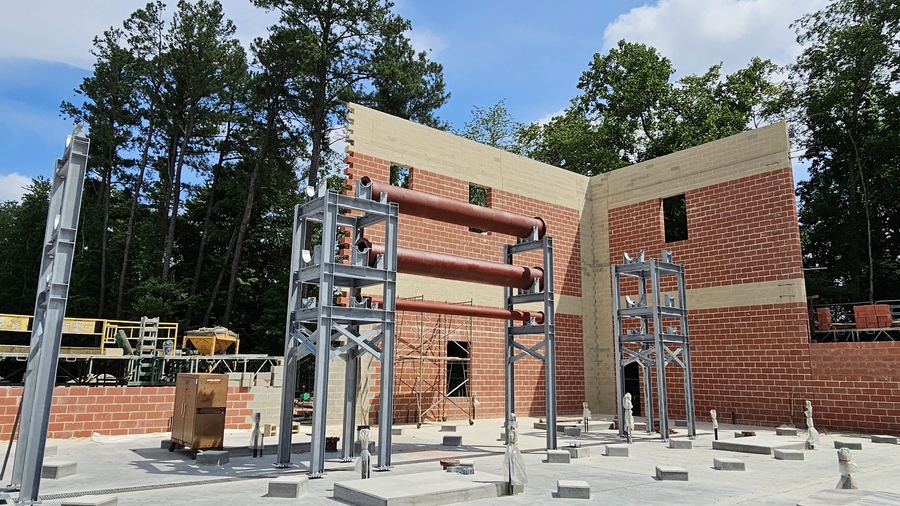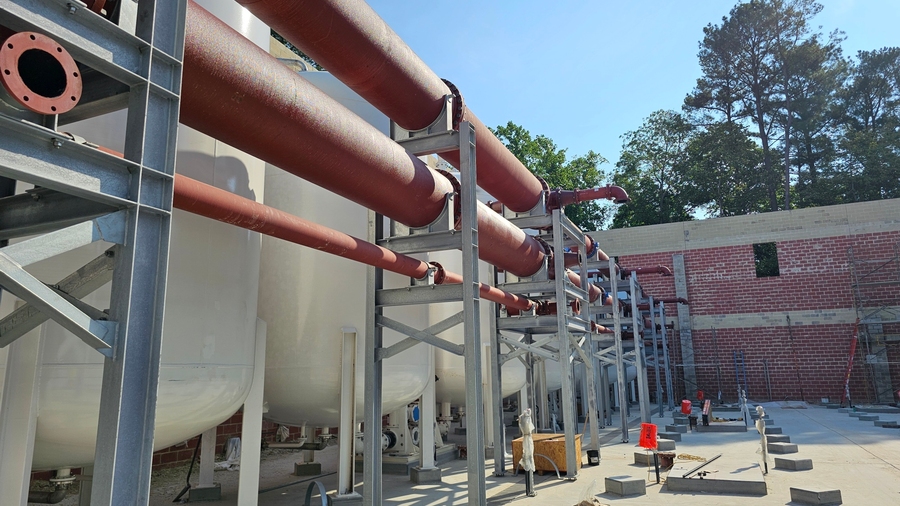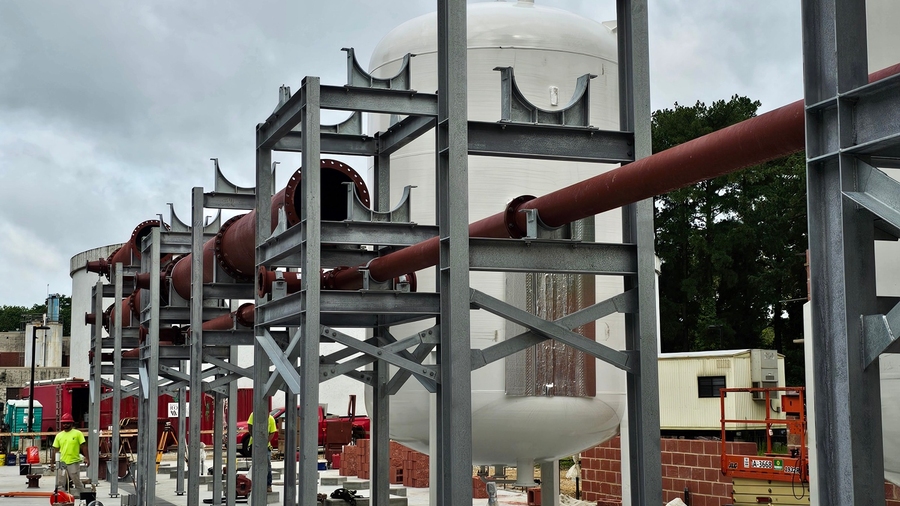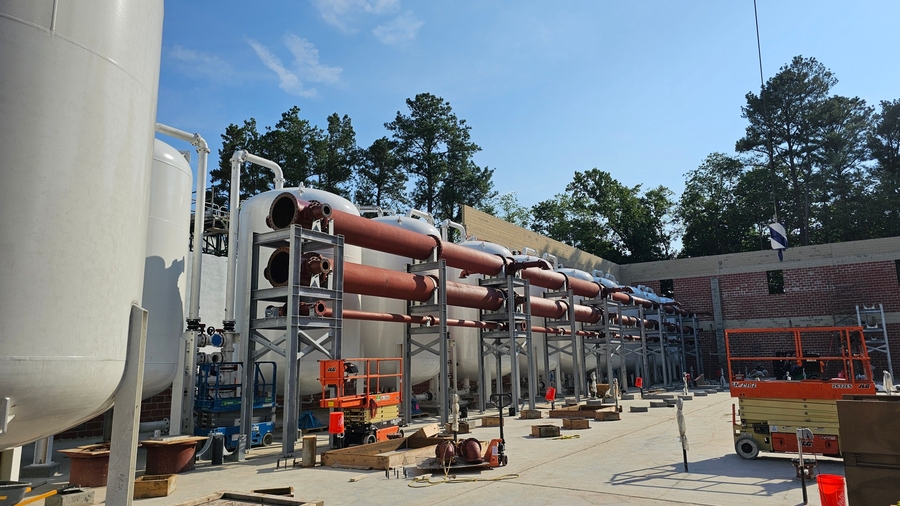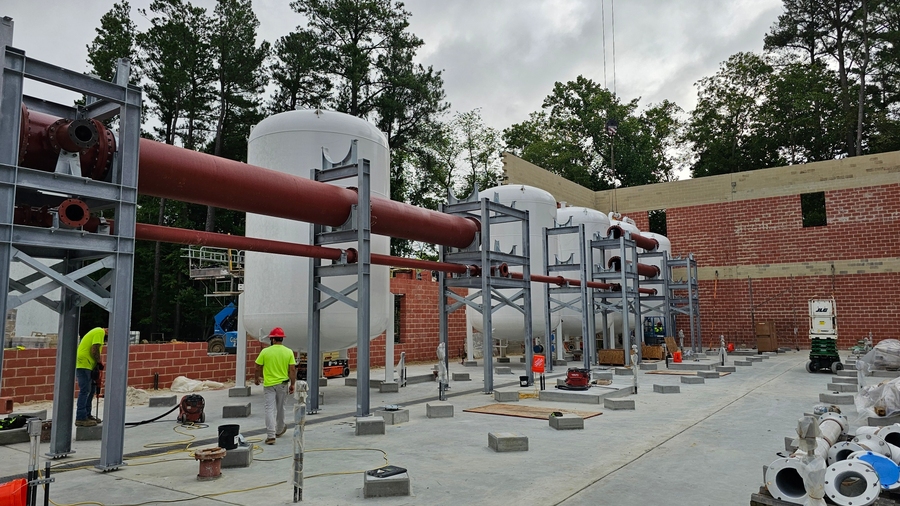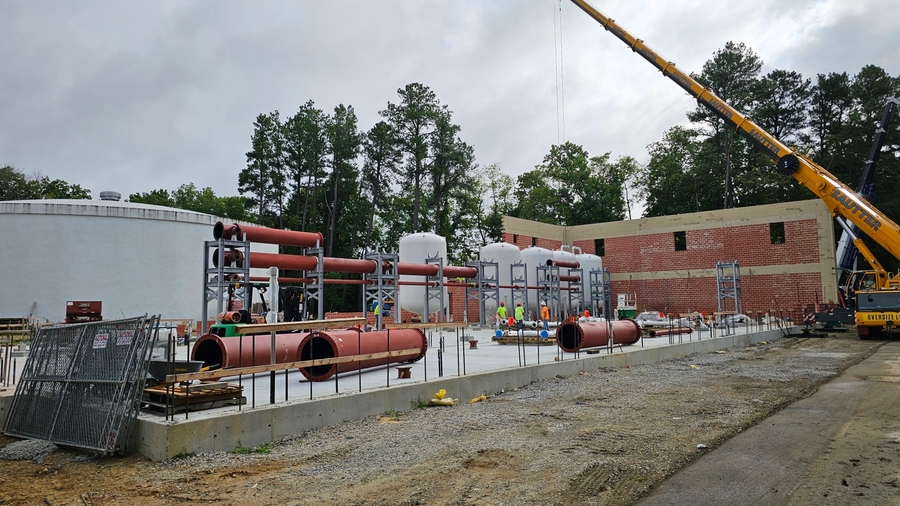Stanton Water Treatment Plant PFAS Removal Facility
Veolia's Stanton Water Treatment Plant, with a capacity of 30 million gallons, draws surface water from the White Clay and Red Clay creeks, treating an average daily flow of approximately 15 mgd. In response to the Environmental Protection Agency's March 2023 mandate on maximum contaminant levels (MCLs) for per- and polyfluoroalkyl substances (PFAS)—chemicals widely referred to as “forever chemicals”—Veolia has proactively initiated upgrades to comply with these new standards.
In 2022, Veolia engaged CHA to spearhead the design and construction of critical upgrades to the Stanton facility. These upgrades are focused on enhancing the plant's infrastructure to effectively remove PFAS, aligning with Delaware's Public Drinking Water Regulations. The comprehensive design includes the development of a new PFAS removal facility, which involves pumps, piping, hydraulics, PFAS vessel sizing, plant layout, chemical dosing, and regulatory permitting. To assist with granular activated carbon selection and operator training, a pilot system was designed, constructed and operated. This project safeguards public health by delivering clean and safe drinking water.
Project summary
The water treatment plant has a PFAS treatment capacity of 30 mgd.
The facility has 42 12-foot-diameter PFAS treatment vessels.
The new PFAS treatment building's footprint is 17,600 feet.
Talk to an expert

Craig Murray, PE*
Senior Principal Engineer,
Project Team Leader
Craig has more than 30 years of experience in project management through all phases of capital project planning and implementation, from initial feasibility through construction management. His diverse background and expertise include scheduling, value engineering, construction sequencing and phasing, civil/site design, and construction administration. His portfolio of project experience encompasses water and wastewater plants and systems, aqueducts, treatment buildings, pollution control, and well basins.
